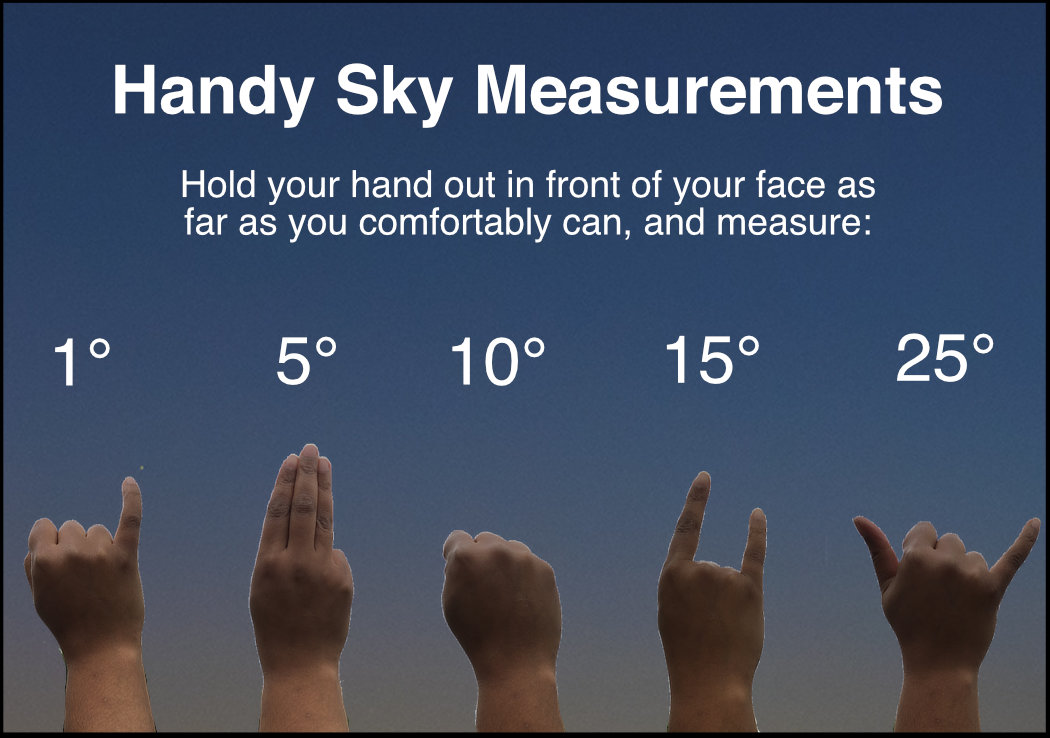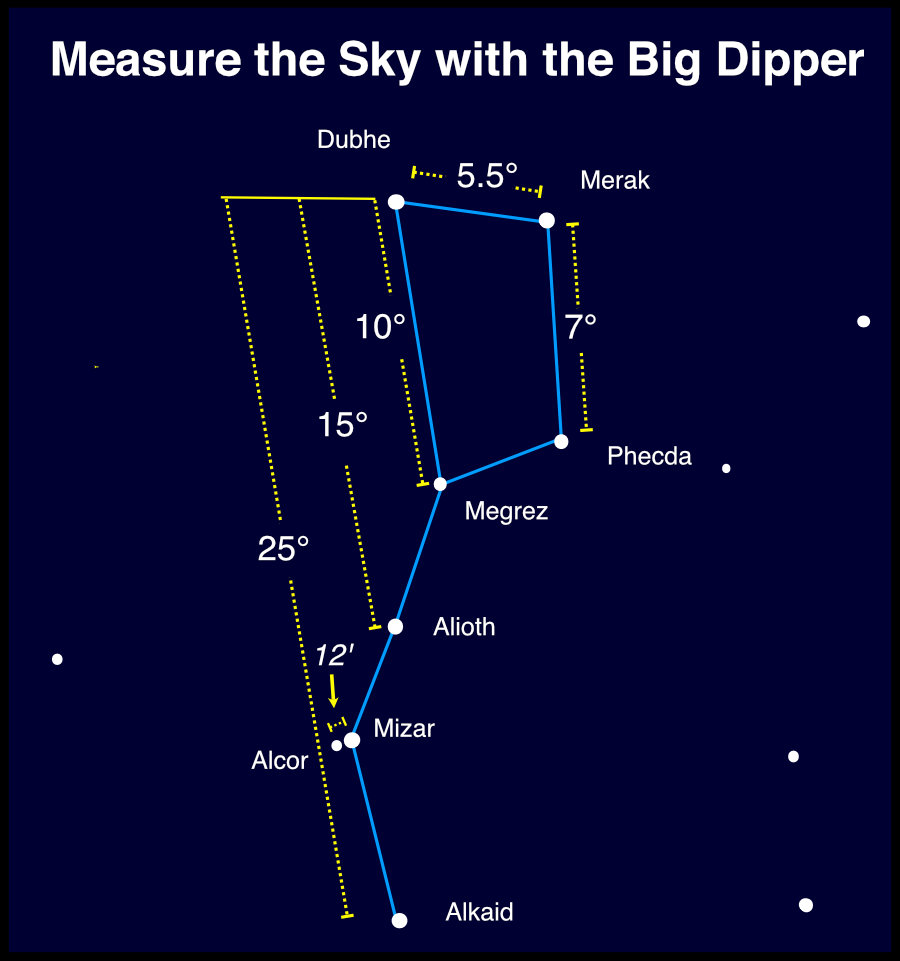
Measure the Night Sky
November 2021 :
Fall and winter months bring longer nights, and with these earlier evenings, even the youngest astronomers can get stargazing. One of the handiest things you can teach a new astronomer is how to measure the sky – and if you haven’t yet learned yourself, it’s easier than you think!
Astronomers measure the sky using degrees, minutes, and seconds as units. These may sound more like terms for measuring time - and that’s a good catch! – but today we are focused on measuring angular distance. Degrees are largest, and are each made up of 60 minutes, and each minute is made up of 60 seconds. To start, go outside and imagine yourself in the center of a massive sphere, with yourself at the center, extending out to the stars: appropriately enough, this is called the celestial sphere. A circle contains 360 degrees, so if you have a good view of the horizon all around you, you can slowly spin around exactly once to see what 360 degrees looks like, since you are in effect drawing a circle from inside out, with yourself at the center! Now break up that circle into quarters, starting from due North; each quarter measures 90 degrees, equal to the distance between each cardinal direction! It measures 90 degrees between due North and due East, and a full 180 degrees along the horizon between due North and due South. Now, switch from a horizontal circle to a vertical one, extending above and below your head. Look straight above your head: this point is called the zenith, the highest point in the sky. Now look down toward the horizon; it measures 90 degrees from the zenith to the horizon. You now have some basic measurements for your sky.

Use a combination of your fingers held at arm’s length, along with notable objects in the night sky, to make smaller measurements. A full Moon measures about half a degree in width - or 1/2 of your pinky finger, since each pinky measures 1 degree. The three stars of Orion’s Belt create a line about 3 degrees long. The famed “Dig Dipper” asterism is a great reference for Northern Hemisphere observers, since it’s circumpolar and visible all night for many. The Dipper’s “Pointer Stars,” Dubhe and Merak, have 5.5 degrees between them - roughly three middle fingers wide. The entire asterism stretches 25 degrees from Dubhe to Alkaid - roughly the space between your outstretched thumb and pinky. On the other end of the scale, can you split Mizar and Alcor? They are separated by 12 arc minutes - about 1/5 the width of your pinky.

Keep practicing to build advanced star-hopping skills. How far away is Polaris from the pointer stars of the Big Dipper? Between Spica and Arcturus? Missions like Gaia and Hipparcos measure tiny differences in the angular distance between stars, at an extremely fine level. Precise measurement of the heavens is known as astrometry. Discover more about how we measure the universe, and the missions that do so, at nasa.gov.



